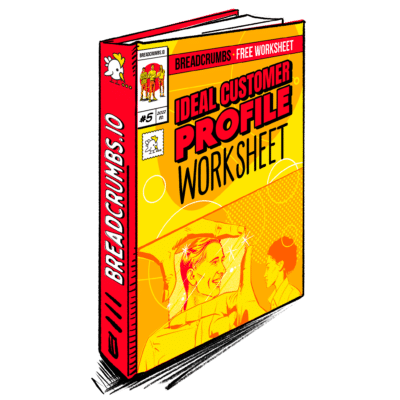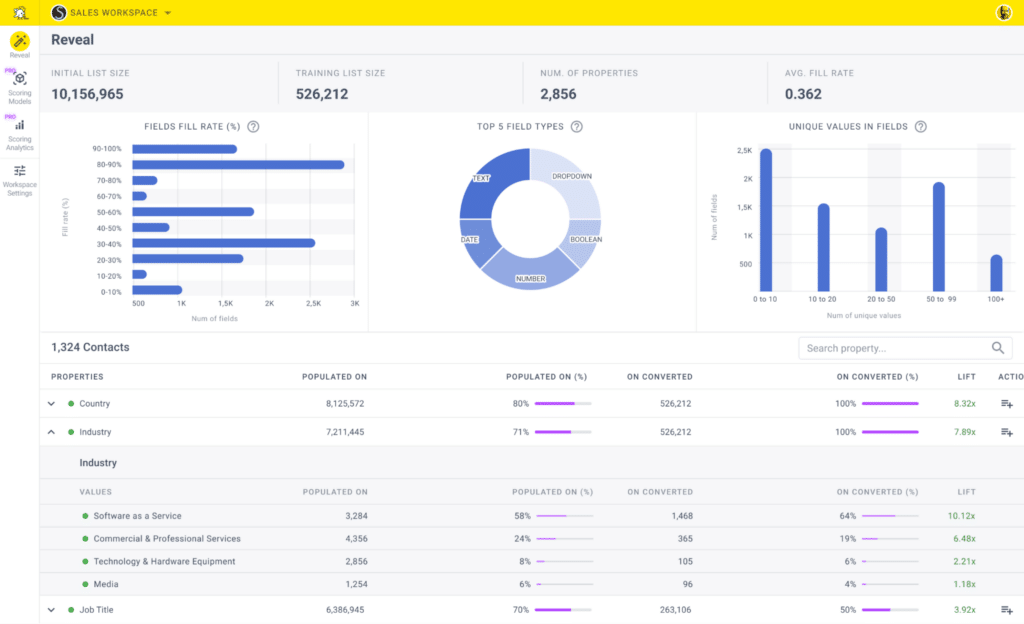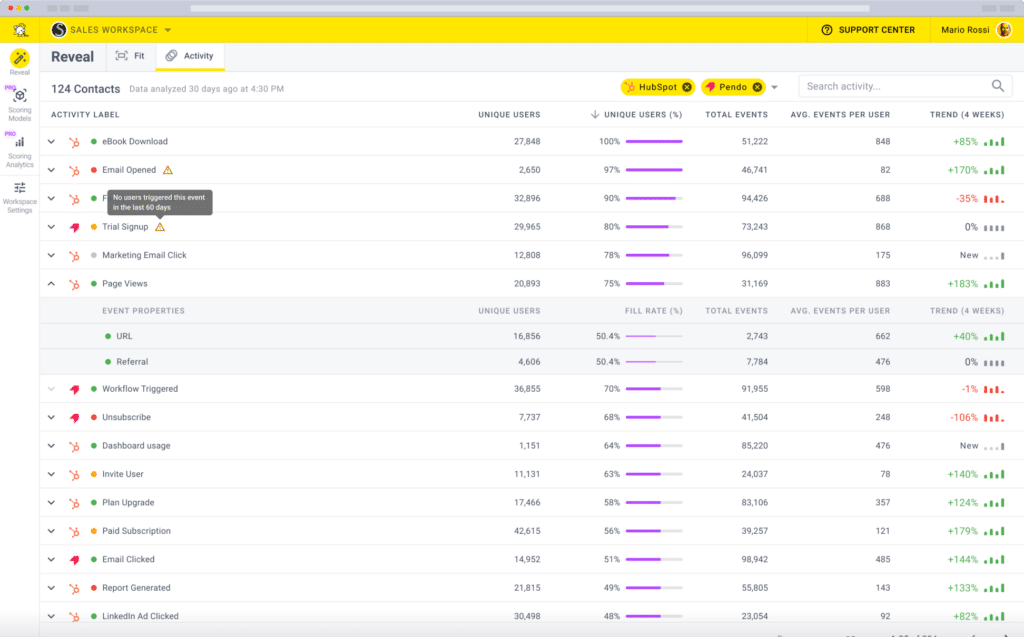

Unkover your competitors’ Marketing Secrets
Say goodbye to wasting hours on competitor analysis by equipping your team with an AI-driven, always-on competitive intelligence platform.


Say goodbye to wasting hours on competitor analysis by equipping your team with an AI-driven, always-on competitive intelligence platform.

Stay Ahead with AI-DRIVEN Competitive Intelligence
Unkover is your AI-driven Competitive Intelligence team delivering critical updates about your competitors the moment they happen:
Track your competitors website changes
Why spend all day stalking the competition when you don’t have to?
With Unkover, you’ll know instantly when your competitors tweak their messaging or shake up their pricing. No more endless scrolling through their sites or second-guessing your strategies.
Let us do the heavy lifting for you, ensuring you’re always in the loop by notifying you the moment a critical change happens on your competitor’s pages.
Sit back, relax, and keep winning—Unkover makes sure you’re not just in the game, you’re always a step ahead.


Read your competitors emails
Companies love updating their customers and prospects about relevant news, product updates, and special offers.
That juicy info from your competitors? It’s yours too. Unkover will automatically capture all their emails and bring them right to your doorstep—accessible to your entire team, anytime.
[COMING SOON: Our fine-tuned AI will sift through these emails, extract key information and send them over to the best team within your org. Less noise, more signal!]
We hear you! Unkover’s goal is not to flood you with tons of data points that no one in your team will ever read. We gather competitive intelligence from thousands of data sources and use AI to highlight actionable information to the right team in your company.
Say goodbye to noise. We’re 100% signal.
ROADMAP
We’re excited to get Unkover in your hands as soon as possible and keep building the best competitive intelligence tool with your precious feedback. The roadmap for the next few months is already exciting, so take a look!
While we build and deliver, here’s our promise to you: as an early tester and customer, you’ll lock in an exclusive bargain price we’ll never offer again in the future.

Spy on your competitors’ full marketing strategy: social, ads, content marketing, email flows, and more.

Track competitive Win/Loss analysis and build battle cards. Get alerted at every pricing change.

Get immediate alerts when competitors announce new features or major releases. Identify strengths and weaknesses from online reviews.

Get the competitive intelligence you need where you need it: Slack, eMail, MS Teams, Salesforce, Hubspot, Pipedrive and more.
slack integration
Unkover’s Slack integration lets you keep your whole team up to speed with your competitors’ updates.

Join now to lock in an exclusive 50% lifetime discount
For startups and small teams, it’s the essential toolkit you need to keep an eye on a select few competitors.

Up to 5 competitors

50 pages monitored

10 email workflows

3-day data refresh
$39
/per month
$ 79
50% discount
Billed annually
For growing businesses, it allows you to monitor more competitors, pages, and email workflows.

Up to 10 competitors

100 pages monitored

20 email workflows

1-day data refresh
$79
/per month
$ 159
50% discount
Billed annually
For large companies, it is tailored to meet the needs of multiple teams needing granular insights.

Custom number of competitors

Custom number of pages monitored

Custom number of email workflows

Hourly data refresh
Custom price
Billed annually

One challenge remains common for businesses of any size, sector, and location—building a successful sales strategy. If your sales team is struggling to connect with your customers, an ideal customer profile just might be the missing ingredient.
In this article, we’ll look at why having an ideal customer profile is crucial for businesses and how to build one for yours.
But first…
An ideal customer profile (ICP) is a template of companies likely to benefit the most from your product and, in turn, are also the most lucrative customer for your business.
A solid ICP is always backed up with accurate data and firmographics, such as:
While both ICPs and buyer personas help you understand your customers better, they are like different arrows in the sales teams’ arsenals.
An ideal customer profile for B2B businesses describes an imaginary company that would benefit the most from your product or service.
B2B buyer personas, on the other hand, are fictitious characters who represent the type of people who work at those targeted companies.
With that said, let’s talk about what makes ICPs so important for B2B businesses.
In today’s post-pandemic era, sales teams need to adapt their strategies significantly. For example, the very first step of the sales outreach strategy at Spotted Media—which helped them gain their first set of customers before the website was ready—is to create an ideal customer profile.
ICP isn’t just a valuable tool for sales teams; it also provides your product team with useful insights to continuously test new and existing features.
On top of that, ideal customer profiles help you…
The average sales cycle increased in length by 24% between 2022 and 2023. 60-day cycles are now 75-day cycles. This indicates that sales teams are struggling with finding quality leads and reducing the sales cycle.
Creating an ideal customer profile can address this challenge. This is especially true today, where buying habits evolve quickly, and customers make impulsive, faster buying decisions.
McKinsey found that the fastest-growing companies drive 40% more revenue by using personalization. With an ICP, you can create relatable campaigns and connect with your customers based on their segments, characteristics, and key behaviors.
Guido Bartolacci from New Breed explains how changing their ideal customer profile increased its deal size by 83% in just one year! Do you know what an increased deal size means? Yup… a higher lifetime value.
94% of B2B marketers use Account-Based Marketing (ABM). And almost half of the survey respondents consider delivering a personalized customer experience to be their biggest challenge with ABM.
Based on this insight, many companies are now making ICP an integral part of their business strategy. Tracy Eiler, the CMO at InsideView, shares, “An important part of our strategy was building our ideal customer profile (ICP). These aren’t always the accounts you can sign the fastest—they’re the accounts most likely to stay with you the longest.”
It’s much easier to deliver a tailored experience to customers and clients when you know exactly what their pain points, challenges, and goals are.

Ebook
Ideal Customer Profile (ICP) Worksheet
Learn how to create an Ideal Customer Profile and build a successful sales strategy with this Ideal Customer Profile (ICP) Worksheet.
You should ultimately have your ideal customer profiles solidified before you start prospecting and qualifying leads.
This is because ICPs weed out irrelevant leads and help the sales personnel to focus on better prospects—this leads to fewer dead ends, increased uptake in your offers, and a shorter sales cycle because you’re targeting people who are a good fit.
Building an ICP isn’t a complex process. The following seven steps will help you build an ICP tailored to your company.
Your contact database will provide the foundations of your ICPs. But before you go ahead and take the data you already have as gospel, it’s important to check that it’s actually going to be useful. Duplicate information, outdated data, and downright wrong details won’t help you create accurate ICPs.
We all know that data is fundamental in today’s world, but you need it to be as clean and as accurate as possible. Building your ICP based on bad data can result in targeting the wrong leads and losing out on money.
This is where Breadcrumbs Reveal comes into play. In just a few steps, you’ll have a complete view of your database health and what attributes and actions are the best revenue predictors.
To get started:

Your ICPs are a reflection of your best customers. Start by compiling a list of your current top customers that match the kind of companies you want to reach in the future. This could be based on how much they spend with you, how long they’ve been a customer, or what tiered subscription they use.
What constitutes a “best customer” depends on your business goals.
Here’s some inspiration:
It’s best if this information is data-backed from relevant sources. A few examples of such sources are:

Salesforce is one of the most high-powered sales and CRM-focused SaaS tools on the market…

Every good sales team needs a great customer relationship management (CRM) tool backing them up. …

Over the past decade, we’re sure that you’ve noticed that your marketing tech stack options…
Once you have your list of customers, you can figure out the ‘why’ and the ‘what’:
These questions will help you understand what drives your ideal customers to purchase, their key pain points, and their main use cases for your product. All of this information will help you identify similar traits and characteristics in future customers.
So how can you find these answers? Here are a few ways to go about it.
Gather customer feedback through online surveys or feedback forms, like SurveyMonkey or Google Forms.
You should now have a good picture of your current best customers and what your ideal customer profile should look like. Your next step is to document their 5-10 main attributes, like:
Add your findings to a template, and you’re good to go.
Protip: Identifying attributes can be a boring and time-consuming exercise, not to mention prone to human error if you have lots of data. We may be biased, but why not let AI-driven ICP analysis tools like Breadcrumbs Reveal do the heavy lifting?
Setup will take you a few minutes, and Reveal will analyze your data and tell you which attributes in your current customers are the best indicators of revenue.
Creating a basic ICP template with just the above three steps is possible. However, we suggest uncovering more insights by following the next three steps.
Learning your customers’ behavior helps you discover new ways of serving them. Plus, it helps your sales team approach the right customer with targeted messaging.
This is exactly how Troops.ai increased its opportunity rate from less than 5% to 14%–it targeted the right people with specific messaging.
So how do you find your customer’s pain points, motivations, and expectations?
It’s simple—talk to them directly. Any customer retention strategy, like hosting a Zoom call or brand community, should do. Focus on getting qualitative data that digs deeper than the initial issue—you also want to find out why customers have those pain points, why they want to solve them, and what’s at risk if they don’t fix the issue.
Understanding the behaviors that drive purchasing decisions in your best customers is critical information if you want to be able to identify it in others.
Events for Reveal uses powerful technology to discover which customer actions predict a higher buying intent—for example, it might find that your best customers find you through a specific platform or they visit at least four pages on your website before they get in touch.
In just a few steps, Events for Reveal will highlight the events that happen most frequently among your best customers. This also helps you determine what activities have a direct, positive impact on your revenue so you can do more of them.

You can discover key behaviors and actions such as:
Use this information to enhance your ICPs and go beyond the simple demographic details like company size, job role, and location.
Use this section in your ICP to outline your product or service’s unique selling proposition (USP). A USP differentiates your offering from your competitors and defines why customers should choose you.
A unique selling proposition also guides the efforts of your sales, marketing, and product teams:
Finally, all of your data and insights can come together and create an official ICP document.
So what does an ICP template look like? Let’s go through what we have seen so far. You should always include basic information about an ideal customer, such as:
Get started compiling your ICP by using the detailed Breadcrumbs ICP Worksheet–and remember to create forms to match each marketing segment you come up with. Pain points and value propositions may change depending on segments as well as how you market to each one of them.
Customer buying behavior doesn’t remain static, so your ideal customer profile shouldn’t either.
Every quarter, go through your ICP and update it with new information that’s come to light. Data-driven scoring like Breadcrumbs will help you update your ICP accurately.
Your brand new ideal customer profile is ready. Now what?
Now is the time to leverage your ideal customer profile and use it in ways that matter the most to your business.
This might be using the ICP as a benchmark for prospecting and scoring new leads. Or perhaps to discover new pain points. You may also want to use your ICP to reach new audiences with targeted and personalized ads.
Events for Reveal will give you a complete 360-degree view of your best customers, including their most common behaviors and characteristics.
This information is incredibly useful for creating data-driven ICPs that aren’t based on guesswork. You can then use this to create effective lead-scoring models with Copilot that are laser-focused and based purely on cold, hard data.
Simply connect the customer data surfaced through Events for Reveal with your Copilot dashboard (or any other popular data-capturing tools you use) and let the tool know which customer segments should be used to define success—ideally, this will be the customers you’ve identified as your best customers based on their activity, behaviors, spend, and longevity with your company.

Then, Copilot will use powerful machine learning to analyze that data and build your lead scoring model. It will use the key behaviors and high-impact attributes of your best customers to generate scores you can use to streamline your sales process and make sure you’re reaching out to the most promising leads at all times.
If you’re ready to start creating ICPs you can use for enhanced lead scoring, download our Ideal Customer Profile worksheet.